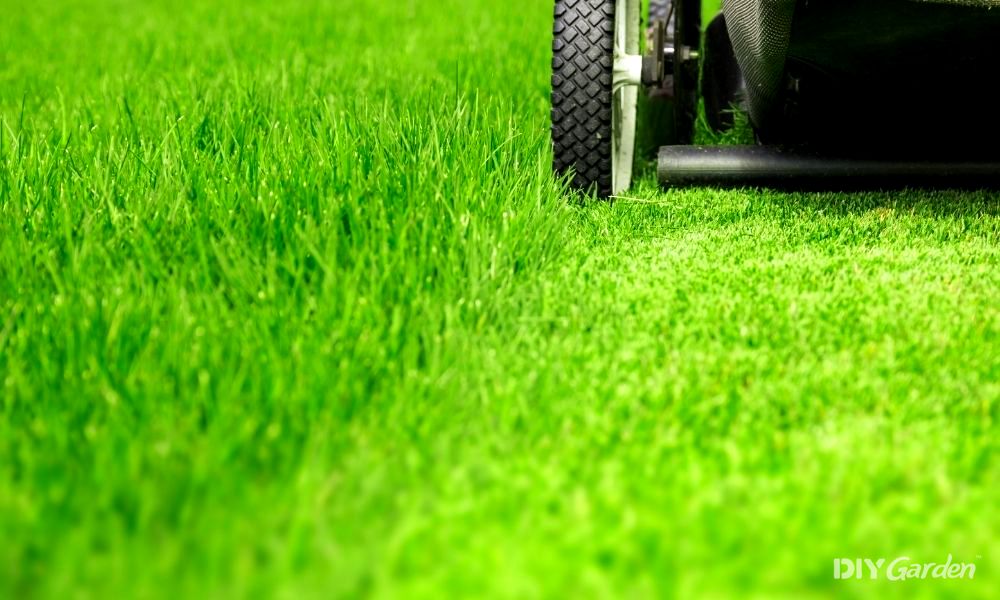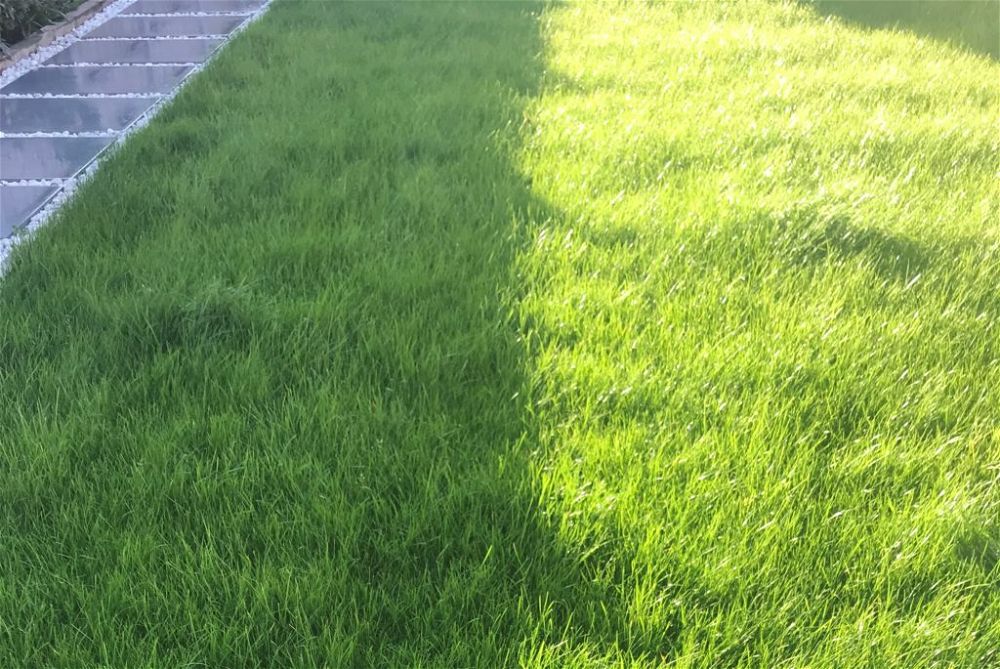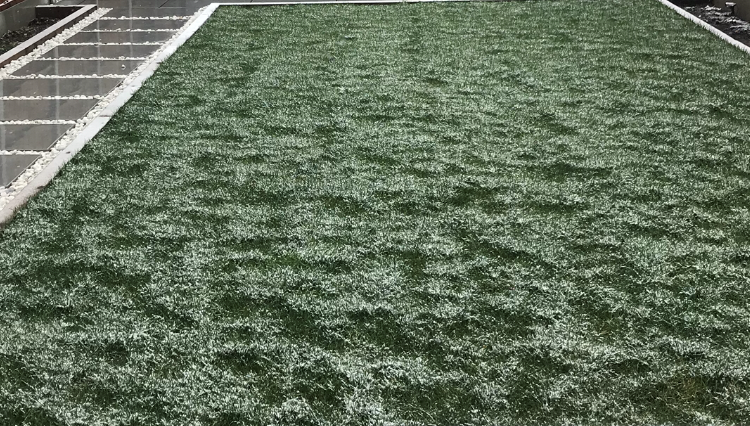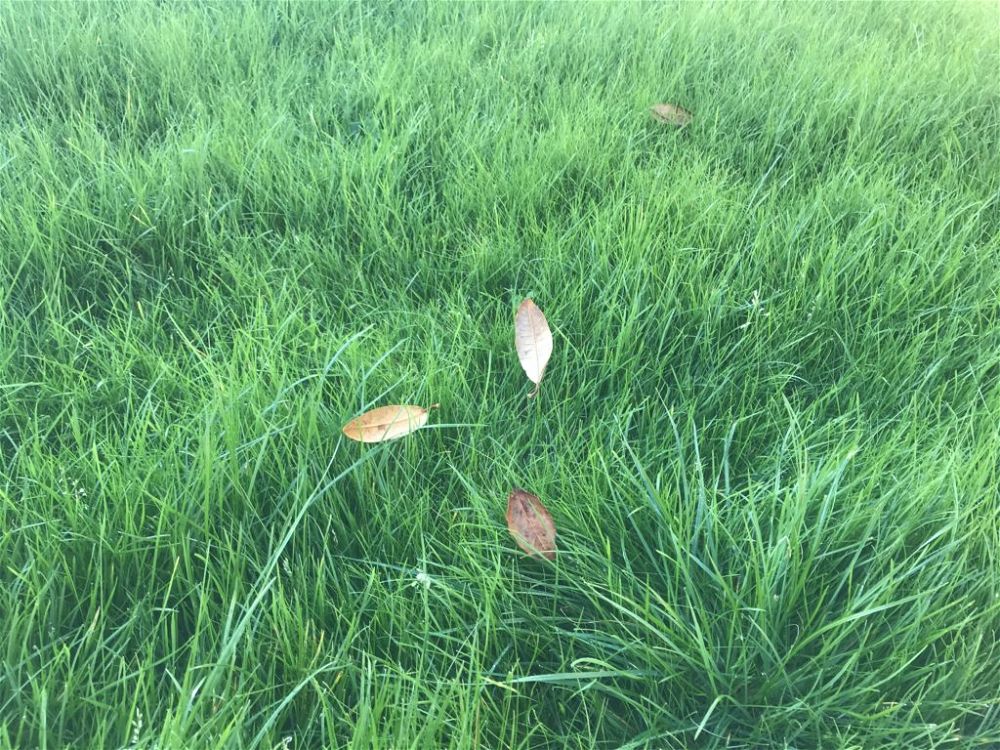
As the final autumn leaves fall, it’s time to start preparing our gardens for winter. That means squeezing in a few more mows of the grass and giving our lawns a good winter feed.
If you’re wondering when you should cut your grass for the last time, we’ve got you covered. Here’s everything you need to know about when does grass stop growing and when you should cut it for the last time.
When Does Grass Stop Growing?
Typically, grass stops growing when the air and soil temperature drops below 5 degrees Celsius. Depending on where you live in the UK, this will usually be November time.
If it’s a cold autumn, grass can stop growing as early as September. If the winter’s mild, growth can continue right up until December.
Does Grass Grow in the Winter?
The most important thing grass needs to grow is a warm temperature. That’s why most lawns go stagnant during the winter and stop growing completely.
Crass can continue to grow in winter, but it all depends on two things:
- How sunny it is – More sunny days in winter means more opportunities for your grass to grow.
- How cold it is – The temperature grass stops growing is below 5 degrees Celsius. If the weather warms up for a few days in winter, you might need to get the lawnmower out near Christmas after all.
Can You Continue to Cut Grass in Winter?
If it’s a mild winter and your grass is reaping the benefits of the extra sunlight, your grass could start growing tall again.
You can cut grass in the winter, just make sure there’s no frost present and that you don’t cut it too short.
When Should You Cut Your Grass for the Last Time?
Knowing when you should stop cutting grass can be tricky. The answer depends on the weather, which (as most Brits know) can be highly unpredictable!
It’s usually best to aim for the middle of November to cut your grass for the last time. For the best results, don’t cut your grass if:
- It’s damp – This can blunt your lawnmower blades and lead to an uneven cut.
- It has rained heavily the last few days – If the soil is still damp, your lawnmower could rip up the grassroots and create patches.
- The ground is waterlogged – This is just an all-around bad thing to do. It could break your lawnmower and damage your grass (plus it can ruin your shoes!).
- There’s a ground frost – Frosty grass makes the leaves brittle, making it easy for them to snap. When it snaps in these conditions, it can cause the grass to die.
4 Things You Can Do to Protect Your Lawn Before Winter
1. Cut It
The best thing you can do to protect your lawn before winter is to mow it. Keeping your grass long during the colder months can make it more likely to rot and turn boggy.
Before winter, cut around 25% off the top or keep the height at around 2-3 inches. Cutting your grass too short will make it harder for it to survive the cold.
2. Fertilise
Apart from Spring, the best time to fertilise your lawn is in October or November. Fertilising your grass just before winter can give it a boost in nutrients.
For the best results, give your grass a winter feed that’s high in iron on a cool, wet day. Using a winter feed on a dry day could turn your grass black, which (needless to say) isn’t healthy!
3. Remove leaves
As beautiful as the autumn leaves look scattered across your lawn, leaving them there over winter can cause your grass to rot. If you can, try and keep your lawn clear of any debris during winter too.
4. Aerate
To improve the drainage of your lawn, consider aerating it around October time. This can help prevent waterlogging and the risk of any fungal infections during the cold and rainy months.
Conclusion
For most of us, our grass stops growing in winter and we can forget about cutting it for a while.
If you’ll miss taking care of your lawn over winter (like me), there are other ways to keep busy taking care of it.
If you’re looking for something else to do with your lawn over winter, check out our ultimate monthly guide on how to look after your lawn throughout the year.



